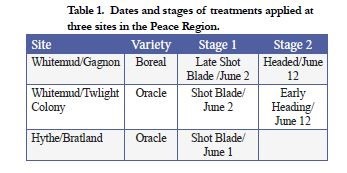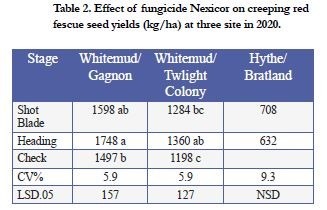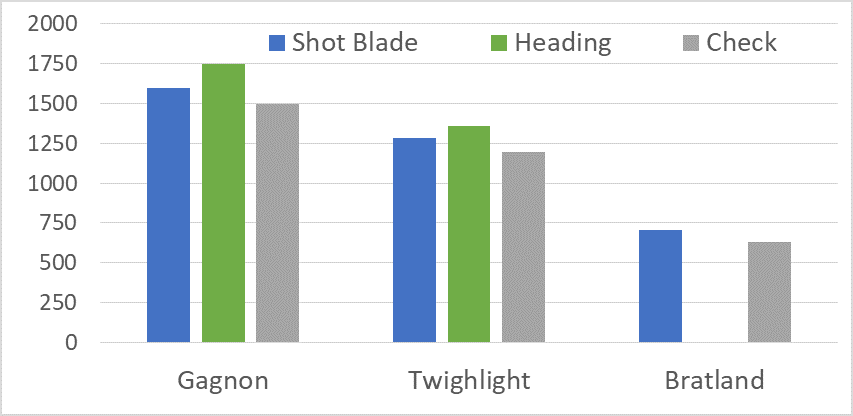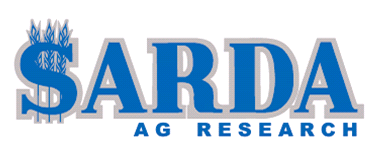Research Field surveys are currently being conducted to determine what diseases are most prevalent on grass seed fields in the Peace Region. The application of the fungicide Headline to creeping red fescue is a standard practice used by a number of growers in the Beaverlodge and Hythe areas. Currently it is tank mixed with herbicides and applied at the end of May to established creeping red fescue stands. BASF has suggested the fungicide Nexicor may be a good fit for use on grass seed crops. Nexicor is a mix of three active ingredients and suppresses a number leaf diseases in cereals. The study is also being carried out on timothy and bromegrass seed crops. Methods:Uniform fields of creeping red fescue were selected to place the trials. Two were located in Whitemud and one near Hythe. Nexicor was applied at 200 ml/acre at two different growth stages. The SRP on Nexicor is $15.00/acre.• All plot sizes were 2X10 M and set up as a RCB design with 4 replications.• Treatments were applied with a small plot 2m boom hand held sprayer.• Plots were swathed and combined.• Area harvested was 15 m2. Seed yield and dockage were determined.The dates and stages of application are listed in Table 1. The first stage of application was made approximately one week after growers had applied their herbicides.

Results and Summary:Precipitation was well above average in the fall of 2019 and spring/summer of 2020. Table 2 shows the yield results collected from the sites in 2020.

Means followed by the same letter do not significantly differ (P=.05 Student-Newman-Keuls)

Although not statistically significant creeping red fescue seed yields following the application of Nexicor at the shot blade stage were higher than the check at all three sites. Nexicor applied at heading stage significantly increased seed yields over the check at both sites where a stage 2 application was made. Seed yields were higher when Nexicor was applied at heading as compared to the shot blade stage. The trial will be conducted for another 2 years tocollect additional data. A detailed powerpoint file, presenting the data, containing additional pictures and information on the 2020 trials, is available by contacting myself at: calvinyoder123@gmail.com.
by Calvin Yoder, Forage Seed Specialist, PRFSA and SARDA Ag
